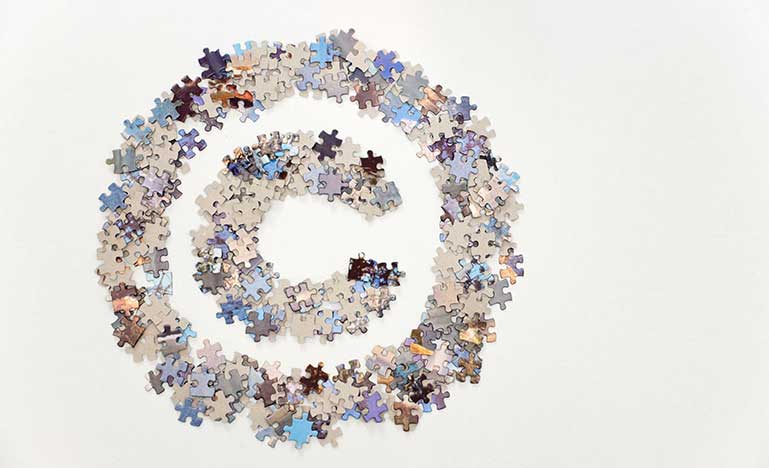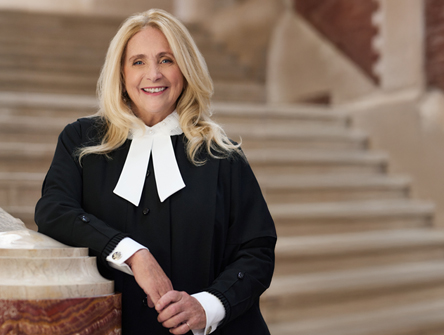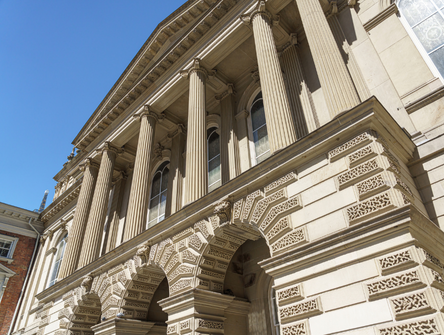Creativity in the age of AI
Do AI-generated works deserve copyright protection?

The federal government wants to make changes to the Copyright Act to keep pace with the rapid advancement of technology. Specifically, it has launched a series of consultations on determining a modern copyright framework for artificial intelligence and the Internet of Things.
But do AI-generated works deserve copyright protection, or should they remain in the public domain given the current limits of what is considered AI?
To answer the question requires us first to ask ourselves what copyright law aims to achieve, says Carys Craig, a law professor at Osgoode Hall in Toronto.
"What is the process of authorship that we're trying to encourage through the copyright system?" she says. "The copyright system is fundamentally about encouraging the creation and dissemination of these works, but fair to the public interest. We have to begin by asking what it is we're trying to encourage, and what the public interest is in the work."
Sangeetha Punniyamoorthy, chair of the Canadian intellectual property group and technology group at DLA Piper (Canada) LLP in Toronto, says that the Copyright Act is designed to keep pace with technological development to encourage artistic, cultural, intellectual creativity.
"The fact is that AI is part of our world, and we have to define what creation means within that context, and we need to have various considerations in place," she says. "Copyright law is all about the balance between copyright owners and copyright users, and AI is an area where this balance has to be important."
Punniyamoorthy adds that many jurisdictions assume that an author is human, and emphasize the involvement of skill and judgment in the creation of original works.
"In Canada, it's a low threshold for skill and judgment," she says. "You have to look at different contexts about who is doing what. What is the programmer doing? What is the AI doing?" The question then is, what is the contribution of both?
What's more, the skill and judgment test for copyright originality has little to do with the quality or sophistication of the work, says Craig.
"Skill and judgment and originality itself go to the process by which the work comes to be," Craig explains. "Two people can create exactly the same work, and both will have created an original work if they did so independently. Originality is really about not copying."
Also, the standards presume the involvement of the human creative process, which is still foreign to AI. "It's not to say that we couldn't just decide, as a matter of law, that these things meet whatever standard we require of them and protect them as such," says Craig, adding that authorship is not an algorithm. "It's not artificial intelligence because authorship is an expressive act. It's an effort to communicate a work to an audience, which is not what an AI is doing."
There can also be copyright resulting from the selection and arrangement of creative works or data. So the selection of what gets fed into the AI can matter.
"What is the contribution there, and is that just a machine output, or a mechanical process?" Punniyamoorthy asks. "If it's just purely mechanical, I'm not sure that there should be copyright protection. But if it's more than mechanical, and the AI programs these days are quite complex, that's where we get into this grey zone..."
Naomi Zener, Counsel at Bereskin & Parr LLP in Toronto, points to Alberta Court of Appeal ruling, where human authorship was involved in processing raw data as a key determinant of exercising skill and judgment. The court recognized that this extended copyright to the data produced. It clearly stated that machine learning was in play, says Zener. But there was also human authorship involved at every stage, creating copyright-protectable work.
"In terms of the processing of that data, there was skill and judgment of a human author to create something usable from that raw data, and when interpreted in the form of a map and a chart, there was selection and arrangement, so it became a compilation protectable by copyright," she says.
By contrast, the Federal Court of Appeal in Toronto Real Estate Board v. Commissioner of Competition determined that the MLS (Multiple Listing Service) data feeds lacked the skill and judgment to be considered a compilation under copyright law. "It's unclear between the two what's the law that pertains to data and the involvement of human skill and judgment, and how much you need to have when you're using AI and machine learning to create work in order for it to be copyright protected," says Zener.
In updating our copyraight law, there are some unique Canadian features to consider. The U.S. allows for corporate authorship in the context of works made for hire. In Canada, we don't. Also, authorship is more important in Canada because of the existence of moral rights, which gives more power to authors to control how the work is used. Finally, copyright assumes the author has a lifespan, which has practical implications for questions surrounding the duration of copyright protection.
There are also questions around the use of materials used to train the AI. "Oftentimes the data input will include content that is subject to copyright protection," says Craig. "There are people who will argue that works ought not to be included in training data without authorization from copyright owners. There are others who argue that we should find some mechanism for remuneration of copyright owners whose works are included as training data."
Craig's view is that copyright should not be "implicated" at the training stage, but there are fair dealing questions to be asked.
"If there is a prima facie unlawful copy, would the fair dealing defence apply, and should it?" Craig asks. "If so, should we also enact a specific and clear defence or exception that would make it clear that this kind of use of copyright content is excluded from the exclusive rights of the copyright owner?"
But before reaching for the fair dealing defence, says Craig, there should be a discussion as to whether this kind of copying should count as a reproduction for copyright purposes. There are already exceptions in the Act for transitory reproductions for technological purposes, such as cached images while browsing a website. These cannot be infringement because they are considered ephemeral.
"The argument might be that in the digital context, in light of new technology, we need to think carefully about what should count as a copy," Craig says. "When it comes to just training the AI, we're talking about vast quantities of data – it's not being read and listened to and appreciated by the AI as though it were an audience for the work, so maybe we shouldn't treat it as though it's a copy for those purposes. It's really just data in that form, and copyright doesn't protect data as such."
Craig suggests changes to the Act that could bring Canada closer in line with the fair dealing provisions in American copyright, which recognize that certain uses of copyright-protected works are beneficial for society. Still, they offer better protection to text and data mining.
"We need to think carefully about what kinds of copies implicate copyright in the first place for technical purposes," says Craig.
According to Éric Lavallée, head of Lavery's Legal Lab on Artificial Intelligence in Montreal, there is also a risk that insufficient training of an algorithm or placing too much weight on one set of work can produce work that is substantially similar to one of the sources used to train the AI.
"In between [input and output], you have the issue related to the method used to process the information, which might be patented, which may cause infringement on third-party IP," says Lavallée.
A work produced by AI that is defamatory or instigates violence could raise liability issues if the work is published automatically and is not supervised.
As part of its WIPO consultation on artificial intelligence and intellectual property submission in February of 2020, the federal government recognized that "long established principles of IP laws, such as those defining thresholds of originality and disclosure requirements, provide built-in means for IP systems to adapt to new realities, as they have done with other disruptive technologies in the past."
"Preserving legitimacy and trust in the IP system will be a key consideration for Canada as it faces these challenges," the submission states.
Craig believes that the current law not allowing copyright ownership in AI-generated works is the right default position.
"As a matter of default, they belong in the public domain," says Craig. "I don't see any evidence of a need to change that for public policy reasons or otherwise. For now, that's just fine."
She adds that there are potential challenges ahead in distinguishing between AI-generated works in which copyright does not vest, and human-created works in which it does. But copyright law is filled with practical problems and the distinctions between what is protected and what is not are always the subject of debate.
If the evidence ultimately shows we need to create new protections for works involving AI, says Craig, the government will have to be careful in how it tailors a new system designed to grant necessary protections but no more," says Craig. Otherwise, we run the risk that AI-generated works become obstacles to human creativity.


